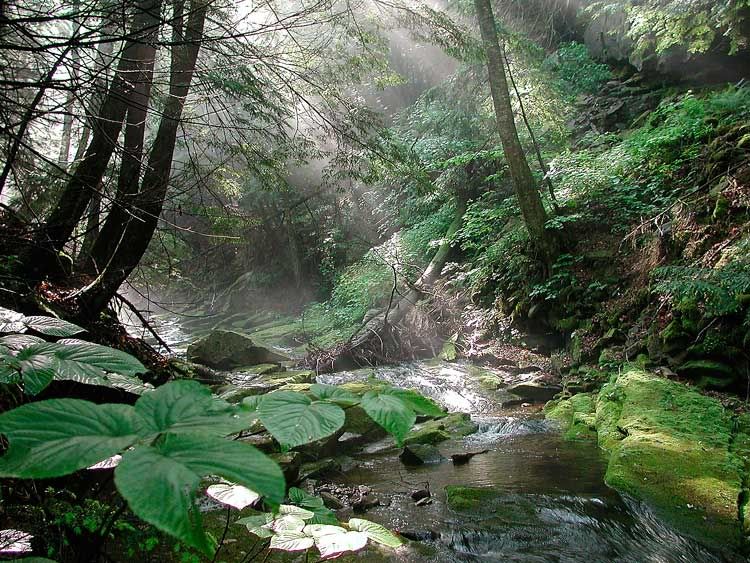
Ketchum Run
In the eastern United States, where there are mountains, there will be streams.
It’s inevitable. Elevated terrain enhances precipitation, which is absorbed by the soils, gathers together, and then works to find the easiest route off the mountain. In the moist, temperate climate of Pennsylvania Appalachians, this means that thousands of cold, swift brooks cleave the earth in their gathering rush to the valleys below. Many start as tiny flows, emerging from the rocks at a point somewhat below the crest of the ridge. Depending on the vertical rise of the land and the watershed they capture, they gather speed and volume as they cascade off the mountainside.
Mountain streams serve as the punctuation for the many long wilderness trails scattered throughout the commonwealth’s wild areas. In planning a trek through the wilderness, attention must be given to the availability of water at points along the planned route. Knowing the location of streams is essential to avoid carrying large amounts of the heavy liquid.

Small Stream on The Old Logger's Path
Many of the small mountainside brooks are seasonal, with no surface water present during drier years. Coming upon a parched stream bed when you were counting on replenishing your water stores is a distinctly unpleasant experience.
Where the mountains are steeper, the topography becomes more interesting. In the deepest draws of the northern mountains, the sun rarely penetrates to the forest floor. Legions of ancient hemlocks line the steep side walls of these eastern canyons, cut by eons of the action of water against rock. Glens form, where the land forms force the water to fall abruptly in altitude, increasing its hydraulic power. Ricketts Glen is just one example of this; there are many other spectacular falls and glens which are often quite remote and visited only by intrepid souls.
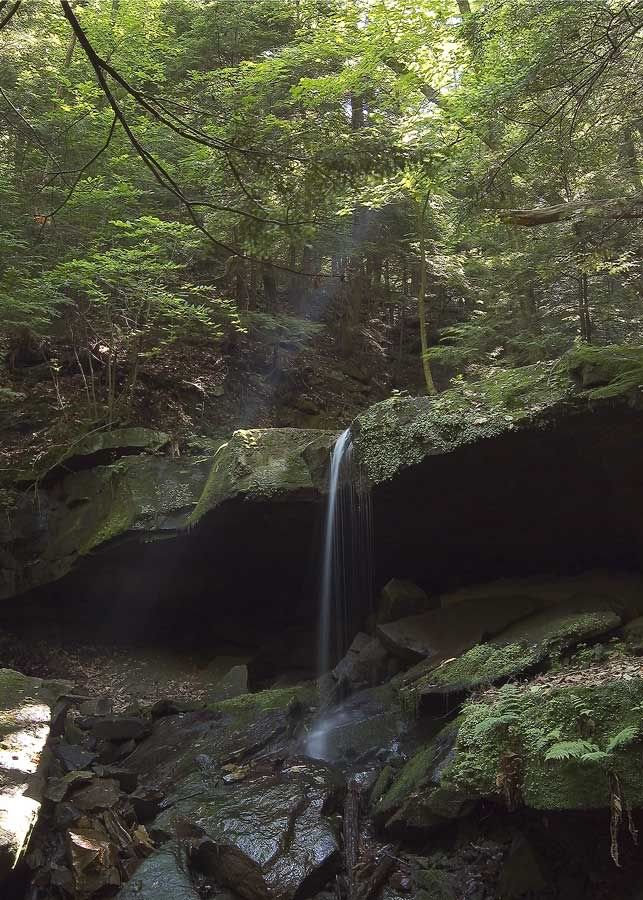
Falls at Mc Connell's Mill
Hiking in the Tidaughten State Forest, deep in a within a mountain glen, I once found a mature American chestnut tree, blooming on a spring morning. So remote was its location, it was untouched by the blight, which kills its more accessible relatives while they are mere spindly adolescents.
Because of the severity of the terrain in ravines and draws, loggers in the past may not have had sufficient access for harvesting. These draw and ravines, deep in our state forests are wonderful places to experience true “Old Growth” forest. Here you can find four-to-five-hundred year old relics from our pre-colonial past, in this case White Pines and Hemlocks that tower two hundred feet and more over the forest floor.
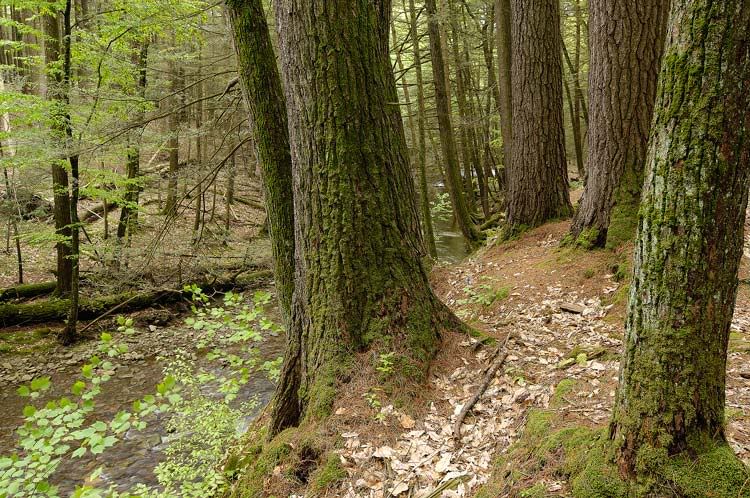
Giants on Boston Run
The climate in these sheltered places is much more constant and gradual than on the nearby ridge tops. Shielded from the sun, snow lingers much deeper into spring. It is cool here, even on hot summer days, especially where the streams run strongly into the warmer months.
On one of the more established hiking trails, such as the Loyalsock or the West Rim Trail, more often than not, a stream crossing will have acquired a fire ring and informal tenting sites. These are generally fine places to overnight. On a clear winter nights, they can be warmer, the dense cover of conifers preventing radiational cooling.
Summer rain is shed initially by the hemlock canopy, making such places are a clever hiker’s refuge in wet weather. The rain comes down eventually however as the accumulated water drips slowly, over days, from the fine interlaced needles.
On a hot summer day, glens and ravines are cooled by the shade and the cold creek water. After the sun sets, cool air descends through the ravines from the mountaintops, clearing the air of biting insects, and providing a lovely sleeping experience.
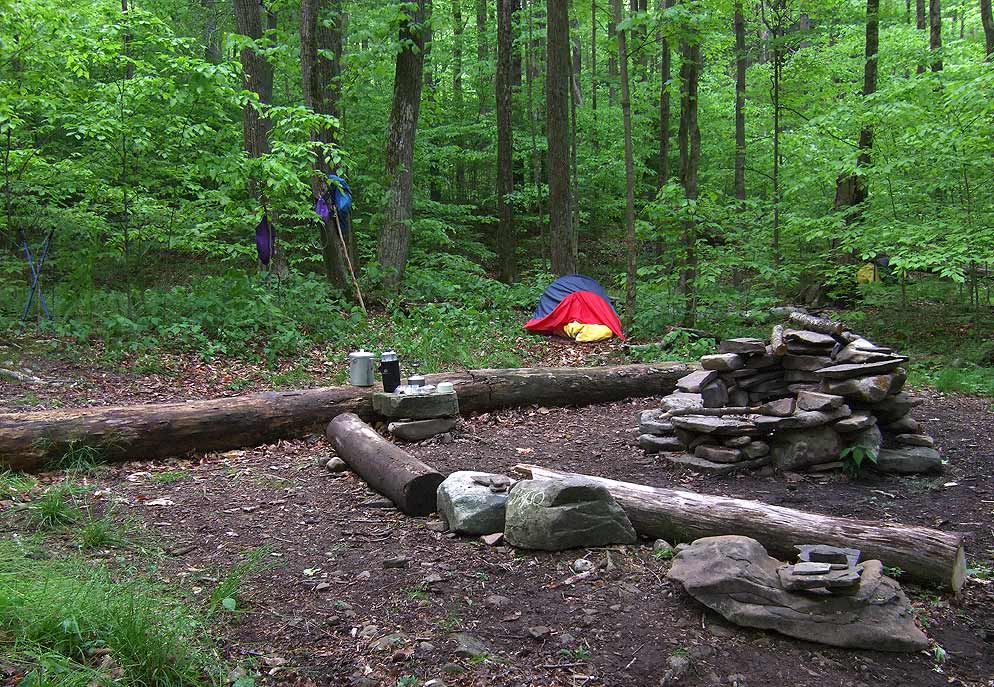
Morning Campsite
Sadly, there is a real threat to these wonderful ecotones. An insect called the hemlock woolly adelgid is spreading throughout the state, threatening to wipe out the hemlocks that shelter these lovely places. There are efforts to control the parasites, but they have only partially successful. If they do not succeed, there will be a fundamental alteration of woodland and stream ecology in the eastern forest.
Visit these lovely places while you still can.



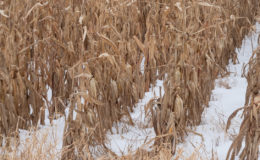
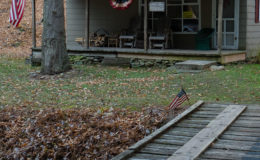
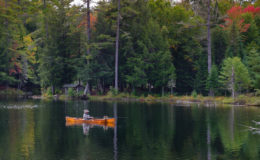
Carol Dombroski
May 24, 2010 11:14 amPictures remind me of Buttermilk Falls near our campground. On hot, humid days we go for a walk along the creek until we reach even bigger falls with deep pools of refreshing water to take a swim or just sit around on rock ledges enjoying the view and what I call “nature’s air conditioning”.
henrysmithscottage
May 24, 2010 10:56 pmThanks Carol. Where’s the campground? There’s a bunch of “buttermilk falls” in the state.